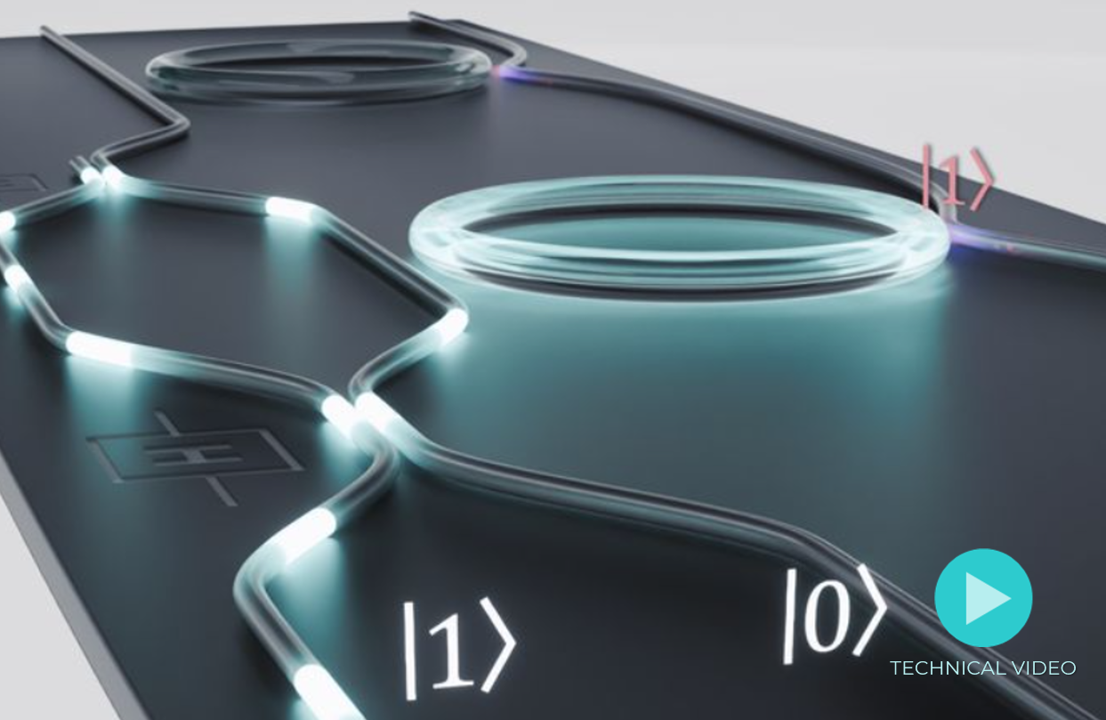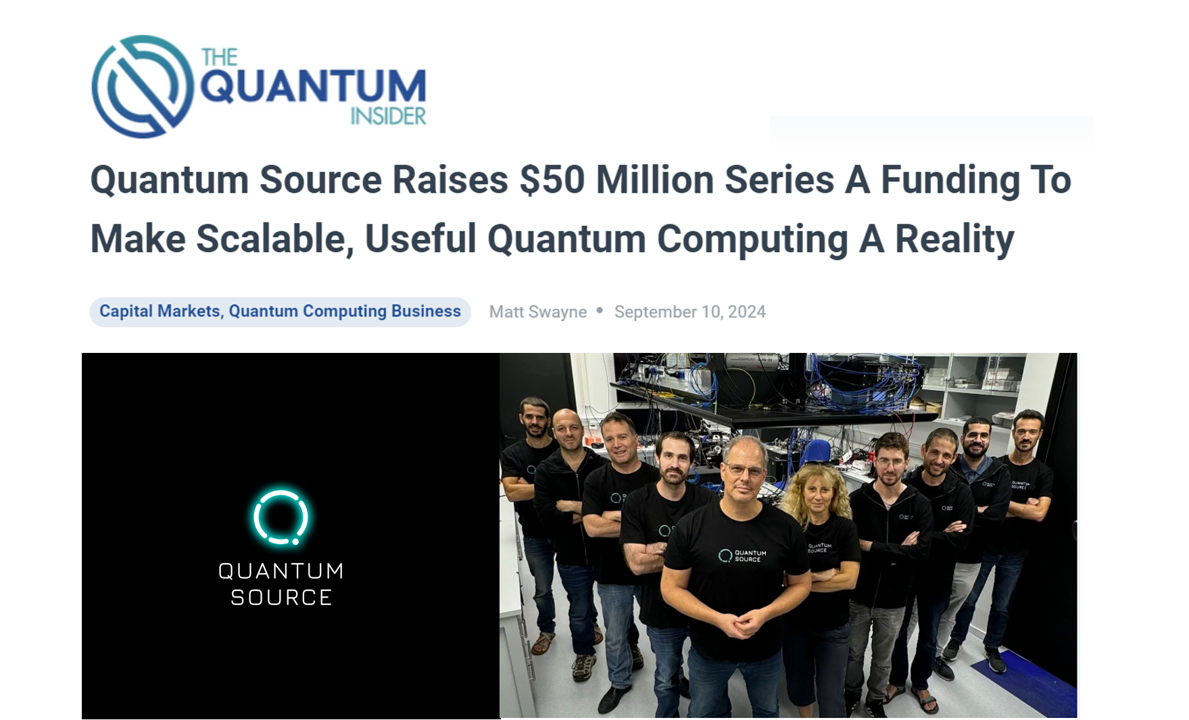
SWAP - the most fundamental unit of communication in nature
According to Quantum Mechanics, a qubit represents the entire knowledge on any physical system that can exist in only two states, like an on-off switch, a flipped coin, or the spin direction of an electron. Coherently exchanging qubits between two different kinds of physical systems has been a longstanding challenge. The work reported in Nature Physics [1] is the first to demonstrate such a unitary exchange between light and matter: a qubit SWAP gate between a single photon and a single atom.
The significance of this demonstration goes beyond the technological achievement since the SWAP operation is essentially the most fundamental act of communication in nature.
There is no physical process that can unconditionally duplicate a qubit (the "no-cloning theorem"), as that would allow measuring an unknown qubit in multiple bases, thereby bypassing the uncertainty principle. Similarly, there is no physical process that can erase a qubit - the information on the system is part of the system, whether we measure it or not.
All this means that in nature, one can never just "read" a qubit (which would mean duplicating it), nor just "write" a new qubit on it (which would mean erasing the previous one). Accordingly, the only way two systems can communicate a qubit between them is by swapping - the qubit stored in system A goes into system B, and the qubit from system B goes into A - which is the physical meaning of the SWAP gate.
Indeed, in this work [1] the authors prove the SWAP operation between the photon and the atom by showing that the photon "swapped-out" from the atom represents the original atomic qubit in a way that exceeds the amount of information that can be measured "classically".
To achieve the conditions that allow such a deterministic interaction between the photon and the atom, the authors utilize a micron-scale chip-based optical resonator to focus the light on a single Rb atom. This confinement, as described in the framework of cavity-QED, increases the electric field associated even with a single photon to a level that enables strong coupling of the resonator mode to atomic transitions. The chosen level configuration supports the effect of Single-Photon Raman Interaction [2], which makes SWAP gate the native interaction in this physical system.
Making quantum computing practical with hybrid photon-atom systems
This achievement carries not only scientific significance, but also technological and practical ones. One example is the ability to utilize the SWAP gate as a heralded quantum memory that is robust to photon loss in the communication channel: - The photon that comes back from the atom is in fact an indication that the input photon indeed survived the communication channel and reached its destination.
Even more importantly, a photon-atom SWAP gate can dramatically impact the quantum computation field by allowing hybrid photon-atom systems.
Nearly all quantum computation platforms today use mostly only one type of qubit, be it atomic qubits, superconducting qubits, or photonic qubits, each platform with its own advantages and limitations. Here, for the first time, qubits can be exchanged between platforms upon need, allowing to harness the relative advantages of each .
Specifically, in Quantum Source we rely on the scalability and robustness of photonic qubits, and utilize the SWAP gate to harness single atoms to mediate deterministic entangling operations, which are otherwise impossible between photons.
[1] O. Bechler, A. Borne, S. Rosenblum, G. Gabriel, O. Mor, M. Netser, T. Ohana, Z. Aqua, N. Drucker, R. Finkelstein, Y. Lovski, R. Bruch, D. Gurovich, E. Shafir, and B. Dayan, Nature Physics 14, 996 (2018)
[2] S. Rosenblum, A. Borne and B. Dayan, Physical Review A. 95, 033814 (2017)
categories
popular

P-Atom-Mediated Deterministic Generation and Stitching of Photonic Graph States
How single atoms can solve the most demanding challenge in photonic quantum computation: deterministic generating of graph states

P-A passive photon-atom qubit SWAP gate
The first experimental demonstration of a qubit SWAP gate between two different types of qubits.
Similar
popular

V-Photonics-based quantum computing
Photonic quantum computing offers the most promising route towards fault-tolerant quantum computers by providing a modular solution.

V-Quantum Source's practical path to million-qubit computations
By making resource state generation deterministic instead of probabilistic, Quantum Source overcomes existing quantum space and efficiency challenges.

V-Bringing Quantum Computing to Light: Quantum Source’s Vision
Watch as we explore: The essence of light and matter: photons and atoms. The early stage of quantum computing and its limitless potential. How Quantum Source is bridging today’s technology gaps with our transformational methods.
popular

N-Exclusive: Prof. Barak Dayan on Quantum Source’s Photon-Atom Breakthrough in Quantum Computing
In this TQI exclusive interview, Prof. Barak Dayan, Chief Scientist at Quantum Source, shares how their photon-atom technology is tackling some of the toughest challenges in quantum computing.

N-Quantum Source Raises $50 Million Series A Funding to Make Scalable, Useful Quantum Computing A Reality
Quantum Source, an Israel-based company developing, technology for powerful, cost-effective, practical photonic quantum computers, announced today it has raised a $50M Series A investment round led by Eclipse, with participation from Standard Investments, Level VC, Canon Equity, as well as existing investors Pitango First, Grove Ventures, 10D, and Dell Technologies Capital. This brings the company’s total funding raised to over $77M. The capital will be used to enhance engineering capabilities and accelerate the commercialization of quantum solutions.





